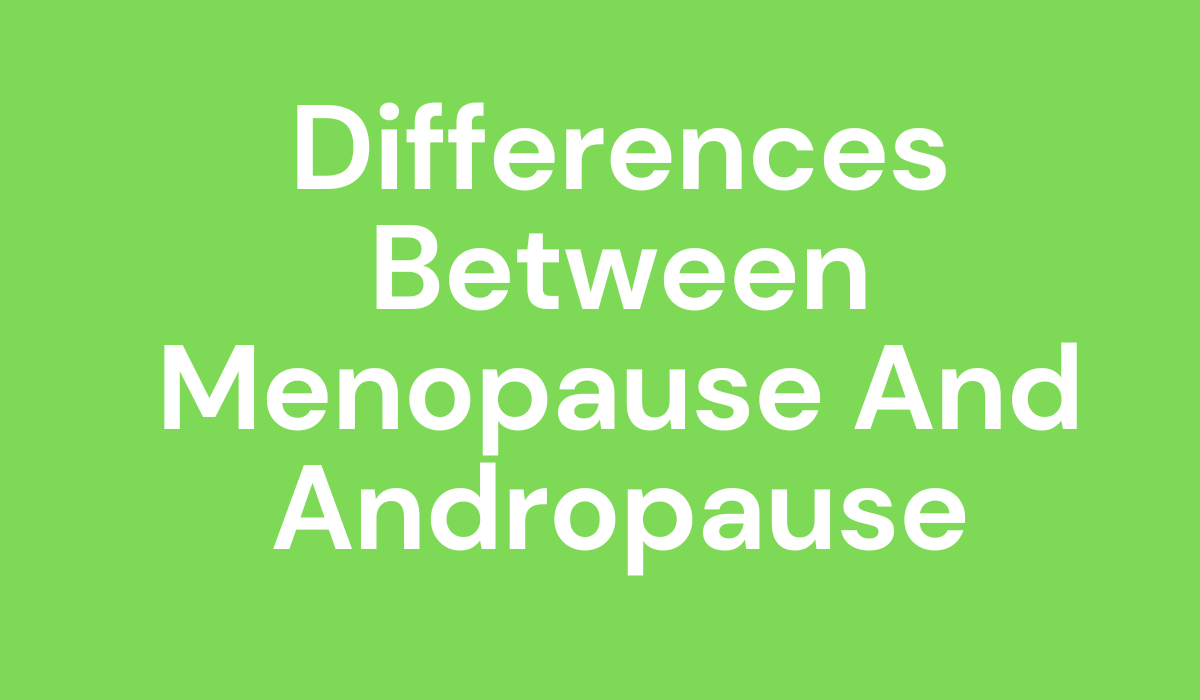
Differences Between Menopause And Andropause
When you hear about the term “andropause,” what do you think? Older men with a beer belly, grey hair, poor eating habits, and impotent? Sure there are some examples of this stereotype, but they are not accurate. With that being said, the term “menopause” has been used to describe women going through their change in life experience, often defined as a time when hormones have stopped flowing freely into the woman’s body, and she is no longer able to have children without significant risk or effort.
Signs of Andropause are when a man’s facial hair begins to grow and thicken. The menopause process often causes this; however, this is not always the case. Suppose a man suffers from conditions that affect hormones, such as thyroid problems, diabetes, or cancer. In that case, these conditions will cause other signs of Andropause, such as lack of libido, erectile dysfunction, and loss of muscle mass and strength.
The Main Differences Between Menopause And Andropause
- There is a wide variation of symptoms of Andropause; some people have no problems at all but have no idea that they are suffering from the condition. This can be pretty distressing for the individual because he does not know what is happening to him.
- It has been my experience that it is a common misconception that Andropause occurs after menopause; this is not true; in fact, some men may retire without ever experiencing or knowing they suffer from any physical impairment caused by hormonal malfunctioning.
- The term “andropause” is not widely used; it is not even known to the medical community.
This is because there is no official definition or cause of this disease. The side effects men experience from Andropause are similar to those women experience during their menopause transition. Still, the symptoms are much less defined and often diagnosed as a mental condition or even depression which many doctors see daily.
- Menopause is much more widely accepted by the medical community, and governments worldwide have established programs to help women get through this time of change in their lives.
- There is no program or funded research project to study menopause in men.
There are many differences between menopause and Andropause. Still, in many ways, the symptoms and actions of both disorders can be pretty similar, for example, loss of sex drive, weight gain, lack of energy, poor memory, and so on. Some similarities have been noted in both sides of the gender equation, such as hot flashes, mood changes, decrease or loss of sexual desire, and depression. However, it must be said that these conditions do not directly affect women alone. They can also affect men as well.
- The symptoms of menopause are very similar to those seen in men, making it challenging to diagnose men with an advanced case of Andropause. The most common signs and symptoms that a man will experience if his testosterone is decreasing include the following: loss of muscle mass and strength, facial hair, erectile dysfunction, loss of libido, and loss of energy. Many doctors will look at the first list above as a prelude to going onto the second list. Still, many also have no idea that these are combinations of side effects caused by a decrease in testosterone levels.
- Many women experience hot flashes, mood swings, and depression due to declining hormones’ effects on their bodies. Many of these symptoms also directly correlate with low testosterone levels in men. Over time, many men go through life with no idea that their lack of libido, weight gain, and energy loss is caused by a hormonal or chemical imbalance in the body.
- It has been my experience that there are many reasons why testosterone levels drop in men. However, it is much easier to predict testosterone levels when they are measured while increasing.
- Aging is one way that there is an automatic decrease in hormone production within a man’s body. However, this is not always the case. Many men continue to have normal testosterone levels well into their sixties, seventies, and even older. One famous example of this is the famous Jackie Robinson, who played for the Brooklyn Dodgers in the 1940s.
- Some men don’t begin to experience symptoms of Andropause until they are well into their fifties and even sixties. Still, there are many cases where men go through puberty after marrying young or having children early. They do not experience problems until later in life when they suffer from a severe case of Andropause.
- There is no doubt that Andropause is a man’s version of menopause, and many men are experiencing the same symptoms of aging, including loss of muscle mass and strength, hot flashes, impotence, depression, lack of energy, etc . . . however these symptoms disappear when their testosterone levels are increased.
There are many differences between menopause and Andropause, but they share very similar qualities and side effects. Many of the symptoms that both sides of the gender experience are caused by hormonal changes directly related to their hormones or a chemical imbalance in the body. A man must know that he has an option to restore his health through natural means such as supplementation with herbs, vitamins, minerals, amino acids, and hormone replacement products.






